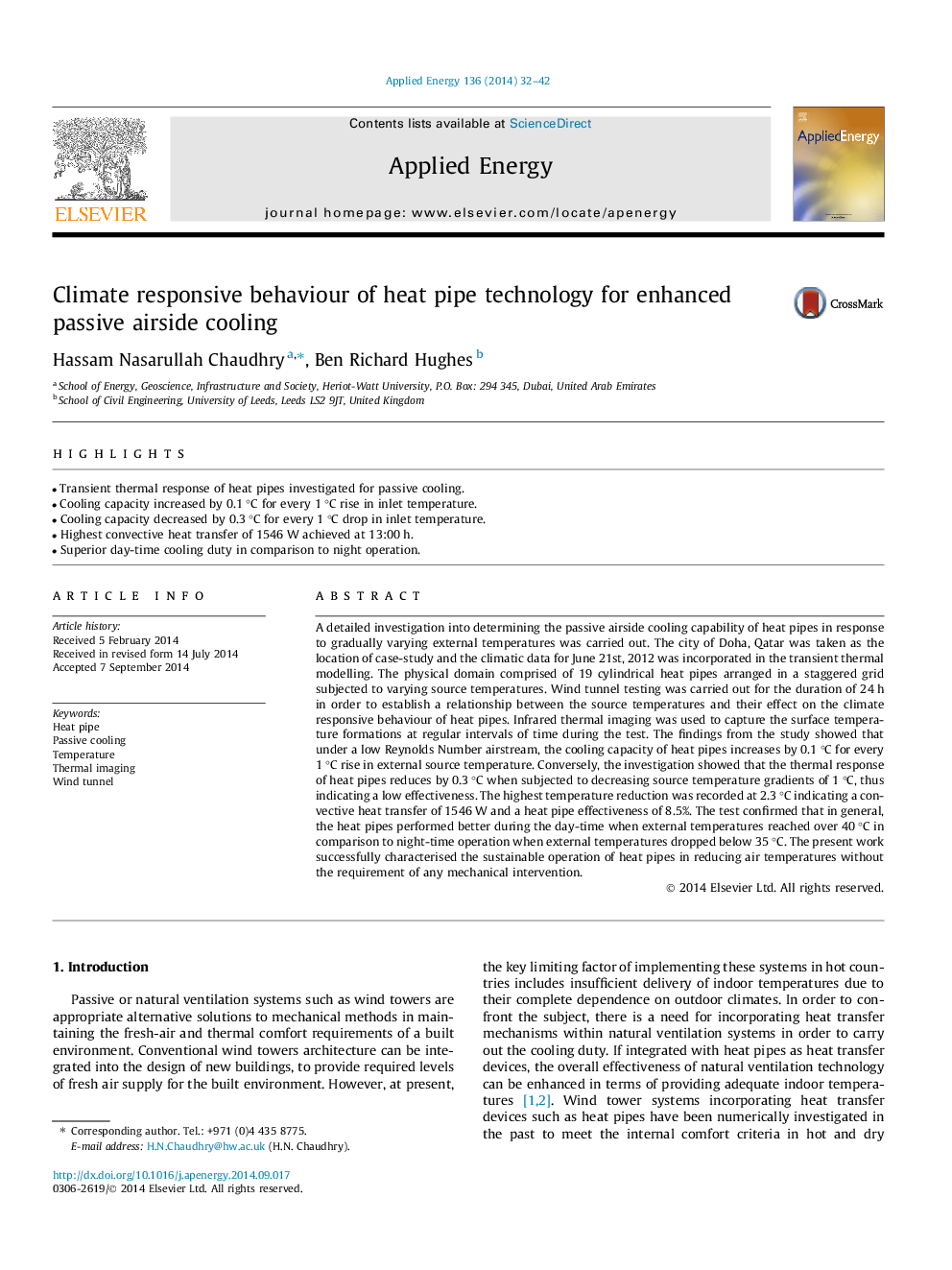| Article ID | Journal | Published Year | Pages | File Type |
|---|---|---|---|---|
| 6688571 | Applied Energy | 2014 | 11 Pages |
Abstract
A detailed investigation into determining the passive airside cooling capability of heat pipes in response to gradually varying external temperatures was carried out. The city of Doha, Qatar was taken as the location of case-study and the climatic data for June 21st, 2012 was incorporated in the transient thermal modelling. The physical domain comprised of 19 cylindrical heat pipes arranged in a staggered grid subjected to varying source temperatures. Wind tunnel testing was carried out for the duration of 24 h in order to establish a relationship between the source temperatures and their effect on the climate responsive behaviour of heat pipes. Infrared thermal imaging was used to capture the surface temperature formations at regular intervals of time during the test. The findings from the study showed that under a low Reynolds Number airstream, the cooling capacity of heat pipes increases by 0.1 °C for every 1 °C rise in external source temperature. Conversely, the investigation showed that the thermal response of heat pipes reduces by 0.3 °C when subjected to decreasing source temperature gradients of 1 °C, thus indicating a low effectiveness. The highest temperature reduction was recorded at 2.3 °C indicating a convective heat transfer of 1546 W and a heat pipe effectiveness of 8.5%. The test confirmed that in general, the heat pipes performed better during the day-time when external temperatures reached over 40 °C in comparison to night-time operation when external temperatures dropped below 35 °C. The present work successfully characterised the sustainable operation of heat pipes in reducing air temperatures without the requirement of any mechanical intervention.
Related Topics
Physical Sciences and Engineering
Energy
Energy Engineering and Power Technology
Authors
Hassam Nasarullah Chaudhry, Ben Richard Hughes,
